Seminário do Grupo de Óptica: “More accurate sample analysis by combined libs and Raman spectroscopy
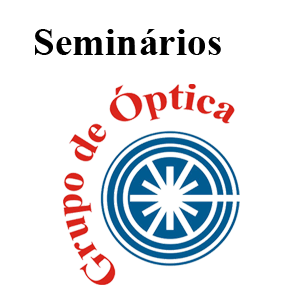 Raman spectroscopy and laser-induced breakdown spectroscopy (LIBS) are both laser spectroscopic techniques able to investigate a wide range of material with no preliminary sample preparation. Raman is a molecular and structural technique thus provide identification of a sample based on these two characteristics. On the other hand, LIBS is an elemental method therefore demonstrates main elements and impurities. Both techniques are fast, in situ and have flexible experimental setups. These unique features lead to applications of these techniques in diverse fields such as medical applications, military, space exploration, solid state, chemical reactions, characterization of thin solid films and the control of industrial processes. Here, after introducing LIBS and Raman spectroscopy, some applications such as potential of LIBS for disease diagnosis, analyzing cement powder and toxic metals, applications of Raman in cancer diagnosis and fake medicine discrimination will be shown. At the end, a setup for measuring LIBS and Raman spectroscopy simultaneously will be introduced and some results will be given.
Raman spectroscopy and laser-induced breakdown spectroscopy (LIBS) are both laser spectroscopic techniques able to investigate a wide range of material with no preliminary sample preparation. Raman is a molecular and structural technique thus provide identification of a sample based on these two characteristics. On the other hand, LIBS is an elemental method therefore demonstrates main elements and impurities. Both techniques are fast, in situ and have flexible experimental setups. These unique features lead to applications of these techniques in diverse fields such as medical applications, military, space exploration, solid state, chemical reactions, characterization of thin solid films and the control of industrial processes. Here, after introducing LIBS and Raman spectroscopy, some applications such as potential of LIBS for disease diagnosis, analyzing cement powder and toxic metals, applications of Raman in cancer diagnosis and fake medicine discrimination will be shown. At the end, a setup for measuring LIBS and Raman spectroscopy simultaneously will be introduced and some results will be given.




 O ensino de graduação nas universidades públicas brasileiras vem se alterando muito lentamente. A metodologia utilizada, ainda, tem o foco no professor e a relação com o estudante é do tipo direta: emissor/receptor. A baixa adesão ao uso de novas metodologias de ensino, em que a aprendizagem é centrada no aluno, é colocada com um dos principais problemas a ser enfrentado.Entretanto, o problema é muito mais complexo. E a solução, mesmo que parcial, passa pela definição de políticas de gestão acadêmica que permitam acelerar as mudanças e, ao mesmo tempo, criar condições administrativas e pedagógicas que admitam reformular os currículos, modernizar disciplinas, incentivar o desenvolvimento docente e valorizar o professor, sem burocracias, com infraestrutura adequada e com programas de incentivos específicos.Outras ações também podem contribuir, como a existência de um fórum de discussão do ensino de graduação em que as idéias e as experiências de ensino de cada um possam ser compartilhadas, socializadas. Nessa palestra iremos destacar os avanços na USP nos dois últimos anos e, ao mesmo tempo, evidenciar os desafios a serem enfrentados para a modernização do ensino de graduação
O ensino de graduação nas universidades públicas brasileiras vem se alterando muito lentamente. A metodologia utilizada, ainda, tem o foco no professor e a relação com o estudante é do tipo direta: emissor/receptor. A baixa adesão ao uso de novas metodologias de ensino, em que a aprendizagem é centrada no aluno, é colocada com um dos principais problemas a ser enfrentado.Entretanto, o problema é muito mais complexo. E a solução, mesmo que parcial, passa pela definição de políticas de gestão acadêmica que permitam acelerar as mudanças e, ao mesmo tempo, criar condições administrativas e pedagógicas que admitam reformular os currículos, modernizar disciplinas, incentivar o desenvolvimento docente e valorizar o professor, sem burocracias, com infraestrutura adequada e com programas de incentivos específicos.Outras ações também podem contribuir, como a existência de um fórum de discussão do ensino de graduação em que as idéias e as experiências de ensino de cada um possam ser compartilhadas, socializadas. Nessa palestra iremos destacar os avanços na USP nos dois últimos anos e, ao mesmo tempo, evidenciar os desafios a serem enfrentados para a modernização do ensino de graduação Nesta palestra, vamos descrever a estrutura do violino, e destacar as contribuições de físicos como Helmholtz, Savart, Raman e Saunders na caraterização da resposta acústica do instrumento.
Nesta palestra, vamos descrever a estrutura do violino, e destacar as contribuições de físicos como Helmholtz, Savart, Raman e Saunders na caraterização da resposta acústica do instrumento. 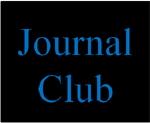 Motivated by the intrinsic non-Fermi-liquid behavior observed in the heavy-fermion quasicrystal Au51Al34Yb15, we study the low-temperature behavior of dilute magnetic impurities placed in metallic quasicrystals. We find that a large fraction of the magnetic moments are not quenched down to very low temperatures, leading to a power-law distribution of Kondo temperatures, accompanied by a non-Fermi-liquid behavior, in a remarkable similarity to the Kondo-disorder scenario found in disordered heavy-fermion metals.
Motivated by the intrinsic non-Fermi-liquid behavior observed in the heavy-fermion quasicrystal Au51Al34Yb15, we study the low-temperature behavior of dilute magnetic impurities placed in metallic quasicrystals. We find that a large fraction of the magnetic moments are not quenched down to very low temperatures, leading to a power-law distribution of Kondo temperatures, accompanied by a non-Fermi-liquid behavior, in a remarkable similarity to the Kondo-disorder scenario found in disordered heavy-fermion metals.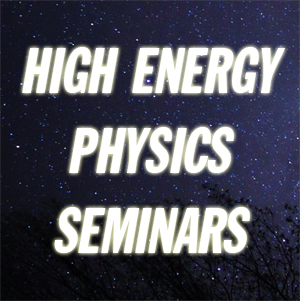 Recent simulations suggest the existence of a very light singlet scalar in QCD-like theories that may be lying just outside the conformal window. Assuming that the lightness of this scalar can be explained by an approximate dilatation symmetry, we develop an effective field theory framework for both the pions and this light scalar, the “dilatonic meson.”We argue that a power counting exists that puts this effective field theory on a systematic footing.
Recent simulations suggest the existence of a very light singlet scalar in QCD-like theories that may be lying just outside the conformal window. Assuming that the lightness of this scalar can be explained by an approximate dilatation symmetry, we develop an effective field theory framework for both the pions and this light scalar, the “dilatonic meson.”We argue that a power counting exists that puts this effective field theory on a systematic footing.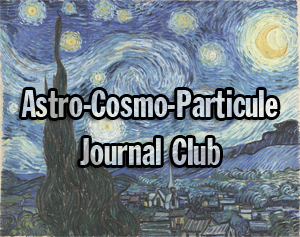 A proposta do programa é reunir estudantes e cientistas interessados em discutir temas relevantes na física de partículas, cosmologia e astrofísica de partículas.
A proposta do programa é reunir estudantes e cientistas interessados em discutir temas relevantes na física de partículas, cosmologia e astrofísica de partículas. I will argue that quantum mechanics endows us with resources that may boost thermodynamic performance: heat-machine power, cooling speed or work, but the basic thermodynamic bounds are still adhered to.The debated rapport between thermodynamics and quantum mechanics will be addressed in the framework of the theory of periodically driven/controlled quantum thermodynamic machines. The basic model studied by us is that of a two-level system (TLS) or a harmonic oscillator, whose energy is periodically modulated while the system is coupled to two distinct thermal baths. When the modulation interval is short compared to the bath memory time, the system–bath correlations are affected, thereby causing cooling or heating of the TLS, depending on the interval. This setup constitutes the simplest (minimal) quantum heat machine (QHM) that may operate as either an engine or a refrigerator, depending on the modulation/driving rate. It is used by us to scrutinize basic thermodynamic principles in the quantum domain:
I will argue that quantum mechanics endows us with resources that may boost thermodynamic performance: heat-machine power, cooling speed or work, but the basic thermodynamic bounds are still adhered to.The debated rapport between thermodynamics and quantum mechanics will be addressed in the framework of the theory of periodically driven/controlled quantum thermodynamic machines. The basic model studied by us is that of a two-level system (TLS) or a harmonic oscillator, whose energy is periodically modulated while the system is coupled to two distinct thermal baths. When the modulation interval is short compared to the bath memory time, the system–bath correlations are affected, thereby causing cooling or heating of the TLS, depending on the interval. This setup constitutes the simplest (minimal) quantum heat machine (QHM) that may operate as either an engine or a refrigerator, depending on the modulation/driving rate. It is used by us to scrutinize basic thermodynamic principles in the quantum domain: (Israel), tendo desenvolvido o pós-doutorado na Universidade de Stanford (Estados Unidos) e liderado um grupo de pesquisa no Weizmann Institute of Science, sediado em Israel. Para saber mais sobre o especialista, clique
(Israel), tendo desenvolvido o pós-doutorado na Universidade de Stanford (Estados Unidos) e liderado um grupo de pesquisa no Weizmann Institute of Science, sediado em Israel. Para saber mais sobre o especialista, clique 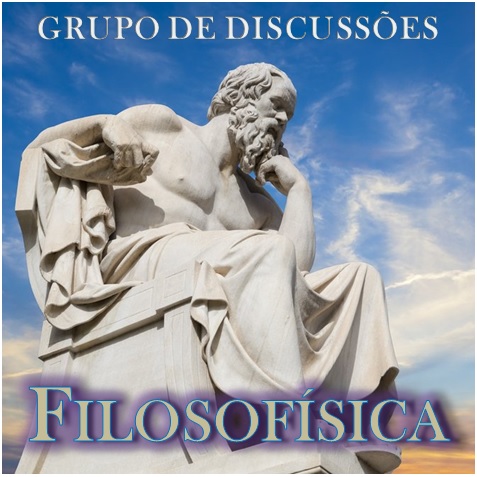 Discutiremos e daremos motivações de estudos para diversos tópicos como: Termodinâmica (do equilíbrio e fora deste); Reversibilidade X Irreversibilidade; Mecânica Estatística; desenvolvimento de um Método Estocástico; teoria de Sistemas Dinâmicos aplicada a Cinética Química, a padrões de Turing (biogêneses e diferenciação celular) e a quebra de simetria quiral; Mecânica Clássica de massas e de cargas; Mecânica Quântica de cargas. Nesse último caso mais especificamente, tentaremos mostrar como estudos envolvendo Mecânica (semi) Clássica poderiam ajudar na compreensão da Mecânica Quântica em algum dos seus fundamentos. Passaremos também por alguns trabalhos práticos como o estudo de: compostos com ligações de Lewis; grafenos baseados em diferentes estruturas moleculares; (foto)catálise entre outros sistemas. E ainda se der, revisitaremos o passado geológico para discutir peripécias paleontológicas e climáticas. Resumidamente, mostraremos como não fazer ciência hodierna e também como não ser um cientista exemplar.
Discutiremos e daremos motivações de estudos para diversos tópicos como: Termodinâmica (do equilíbrio e fora deste); Reversibilidade X Irreversibilidade; Mecânica Estatística; desenvolvimento de um Método Estocástico; teoria de Sistemas Dinâmicos aplicada a Cinética Química, a padrões de Turing (biogêneses e diferenciação celular) e a quebra de simetria quiral; Mecânica Clássica de massas e de cargas; Mecânica Quântica de cargas. Nesse último caso mais especificamente, tentaremos mostrar como estudos envolvendo Mecânica (semi) Clássica poderiam ajudar na compreensão da Mecânica Quântica em algum dos seus fundamentos. Passaremos também por alguns trabalhos práticos como o estudo de: compostos com ligações de Lewis; grafenos baseados em diferentes estruturas moleculares; (foto)catálise entre outros sistemas. E ainda se der, revisitaremos o passado geológico para discutir peripécias paleontológicas e climáticas. Resumidamente, mostraremos como não fazer ciência hodierna e também como não ser um cientista exemplar.